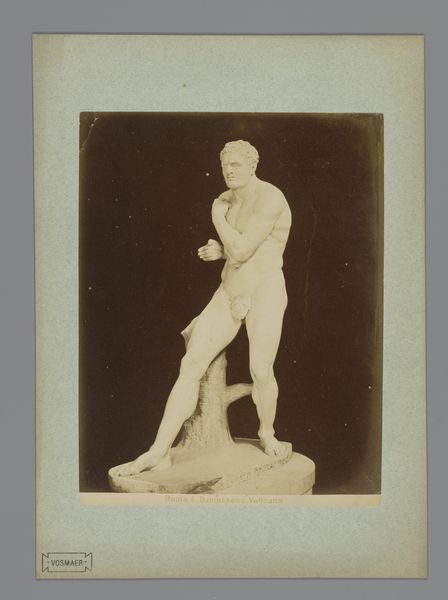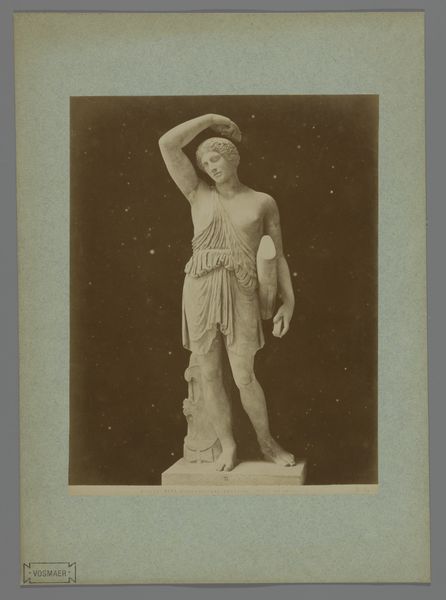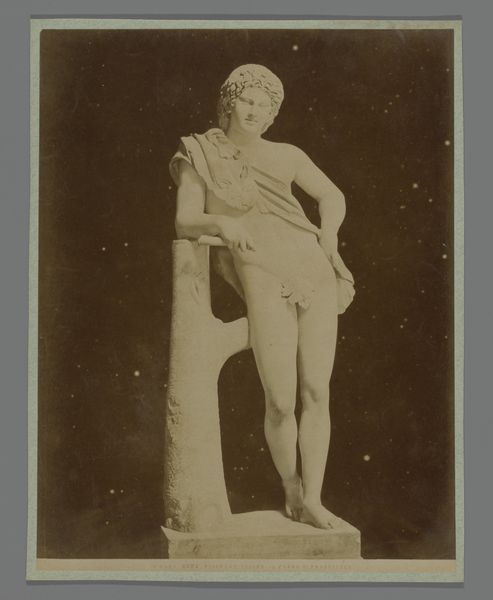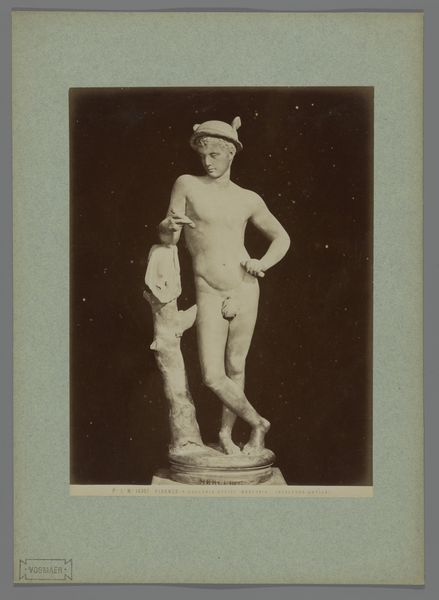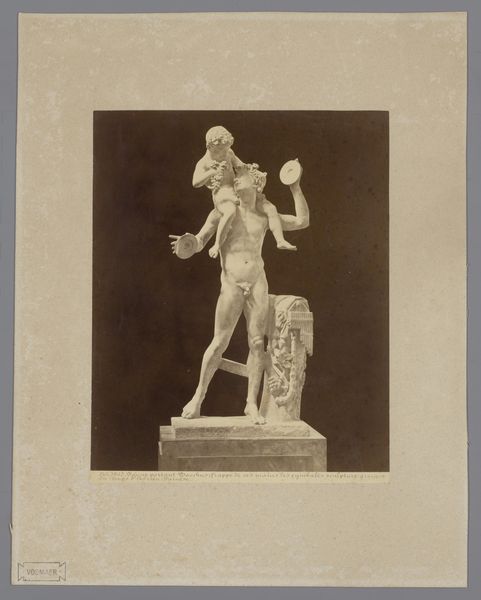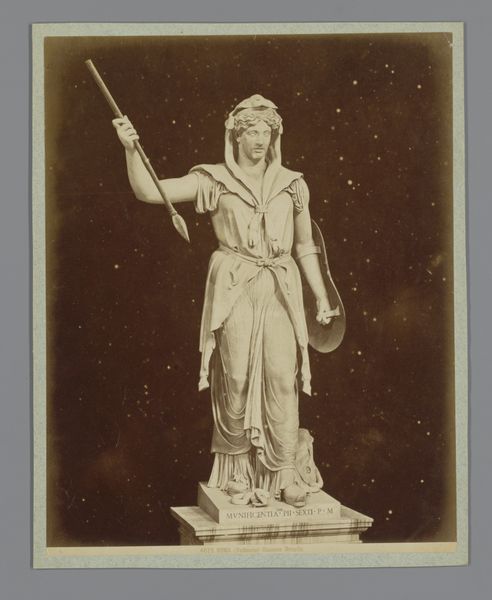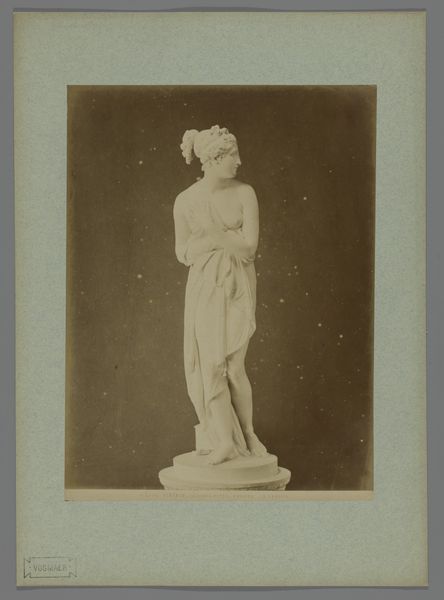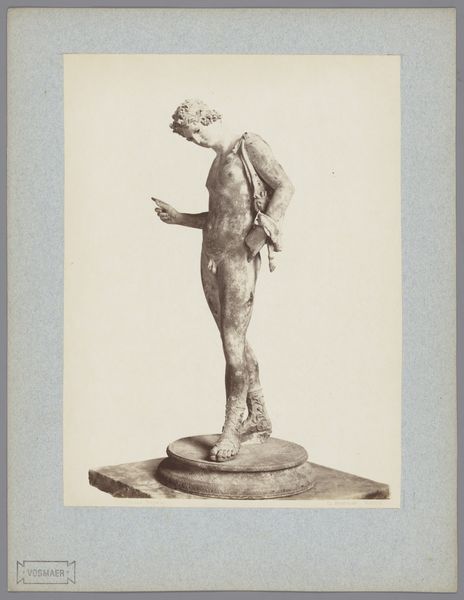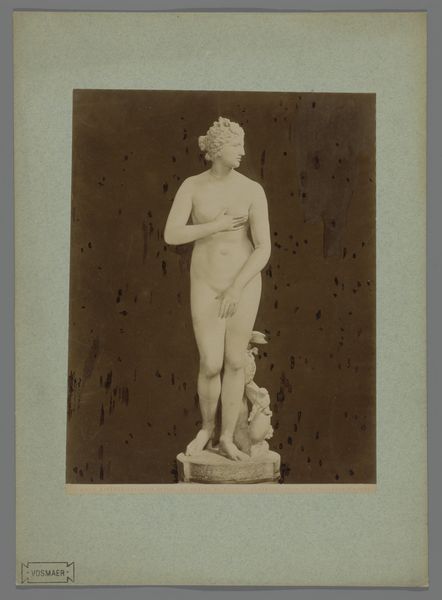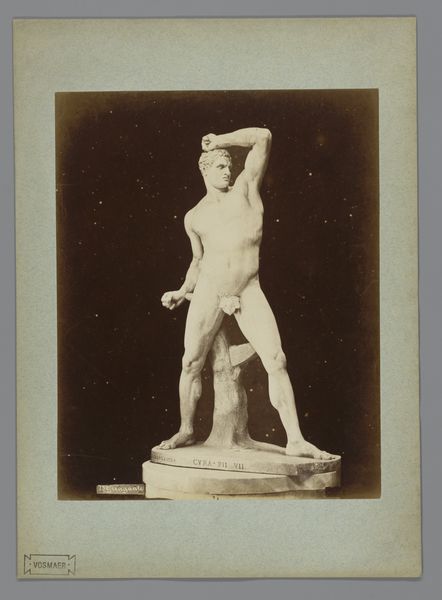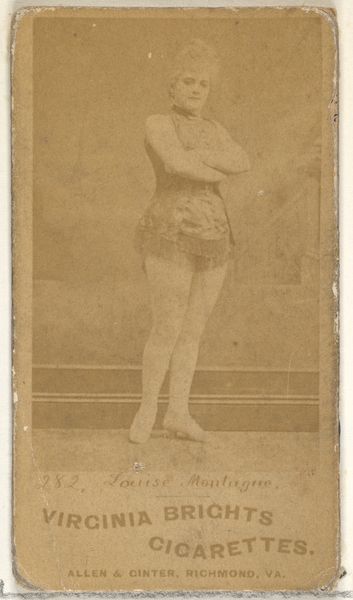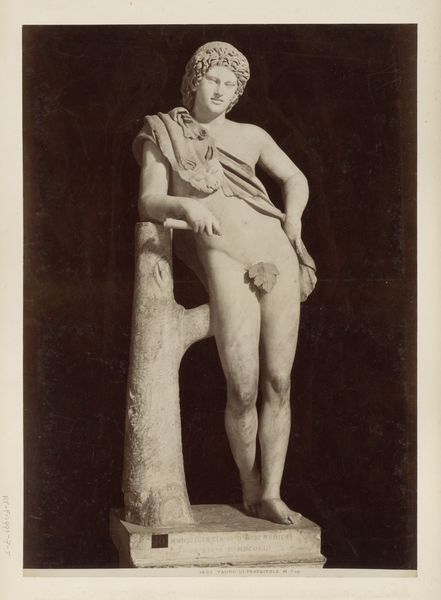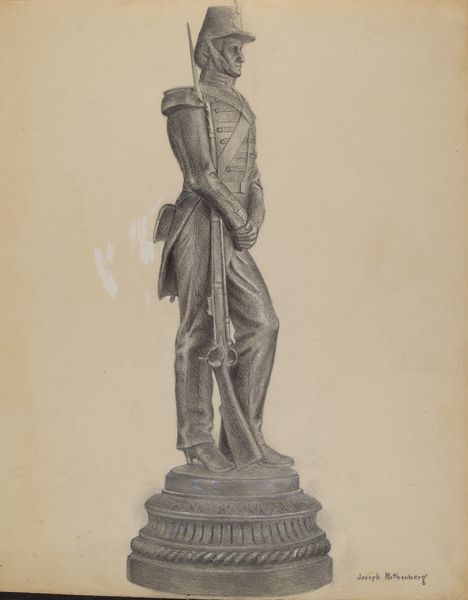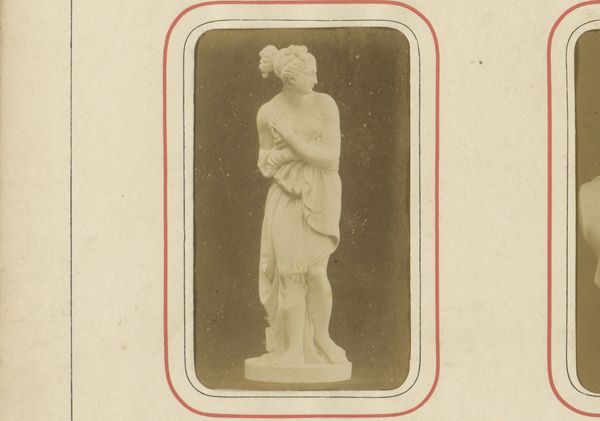
Sculptuur van een auriga of wagenmenner in de Vaticaanse Musea, Italië 1852 - 1900
0:00
0:00
bronze, photography
#
portrait
#
sculpture
#
greek-and-roman-art
#
classical-realism
#
bronze
#
photography
Dimensions: height 251 mm, width 193 mm, height 262 mm, width 206 mm
Copyright: Rijks Museum: Open Domain
Curator: What a find! I am captivated by this photograph entitled “Sculptuur van een auriga of wagenmenner in de Vaticaanse Musea, Italië” taken sometime between 1852 and 1900 by Fratelli Alinari. It now resides in the Rijksmuseum. Editor: Immediately, I see the figure rendered in soft sepia tones which adds a layer of solemnity to what I would imagine as an icon of the chariot age. Curator: I am particularly interested in the sculpture's symbolic significance. In Roman society, the auriga or charioteer held an esteemed position, and this figure reflects ideas of power, control, and victory that resonate throughout Classical Roman art. The laurel crown held across the shoulders reinforces notions of honor. Editor: I want to ask about power and control. If we're viewing this through a modern lens, what can a classical figure say about leadership or representation today? Is it meant to evoke nostalgia for empire, or can we tease apart these symbols? Curator: That's exactly where it gets complicated! On the one hand, yes, the auriga is an ideal of masculinity and governance...a heroic figure associated with domination, which may carry connotations for many. Yet it is possible to see it representing skill and agility, in keeping the "horses" of a state or our own nature moving. Editor: But it depends how the figure is read or by whom. Are we meant to consider those excluded or those without the possibility to participate? It invites thinking through the role of class in sport and even something like the gladiator spectacle. The stakes of this era are high. Curator: The photographer would almost certainly not have seen these modern complications. The Alinari brothers sought, it seems, to evoke a certain veneration and to transmit cultural legacy through their lenses. We see this desire across similar portrait photography. Editor: Photography was also evolving at this time and coming into its own as its medium with access. The materiality in play from the sepia tones speaks to that. And I suppose my feelings here reflect our responsibility to see art through the complicated webs of past, present, and possibility. Curator: Indeed! As symbols live on. In art, politics, and everywhere in between. We are tasked with teasing through these intricate meanings.
Comments
No comments
Be the first to comment and join the conversation on the ultimate creative platform.
